Abstract
OBJECTIVE--To examine whether the observed excess of childhood leukaemia and lymphoma near the Sellafield nuclear plant is associated with established risk factors or with factors related to the plant. DESIGN--A case-control study. SETTING--West Cumbria health district. SUBJECTS--52 Cases of leukaemia, 22 of non-Hodgkin's lymphoma, and 23 of Hodgkin's disease occurring in people born in the area and diagnosed there in 1950-85 under the age of 25 and 1001 controls matched for sex and date of birth taken from the same birth registers as the cases. MAIN OUTCOME MEASURES--Antenatal abdominal x ray examinations, viral infections, habit factors, proximity to and employment characteristics of parents at Sellafield. RESULTS--Expected associations with prenatal exposure to x rays were found, but little information was available on viral illnesses. Relative risks for leukaemia and non-Hodgkin's lymphoma were higher in children born near Sellafield and in children of fathers employed at the plant, particularly those with high radiation dose recordings before their child's conception. For example, the relative risks compared with area controls were 0.17 (95% confidence interval 0.05 to 0.53) for being born further than 5 km from Sellafield 2.44 (1.04 to 5.71) for children of fathers employed at Sellafield at their conception, and 6.42 (1.57 to 26.3) for children of fathers receiving a total preconceptual ionising radiation dose of 100 mSv or more. Other factors, including exposure to x rays, maternal age, employment elsewhere, eating seafood, and playing on the beach did not explain these relationships. Focusing on Seascale, where the excess incidence has predominantly been reported, showed for the four out of five cases of leukaemia and one case of non-Hodgkin's lymphoma whose fathers were employed at Sellafield and for whom dose information was obtained that the fathers of each case had higher radiation doses before their child's conception than all their matched control fathers; the father of the other Seascale case (non-Hodgkin's lymphoma) was not employed at the plant. These results seem to explain statistically the geographical association. For Hodgkin's disease neither geographical nor employment associations with Sellafield were found. CONCLUSIONS--The raised incidence of leukaemia, particularly, and non-Hodgkin's lymphoma among children near Sellafield was associated with paternal employment and recorded external dose of whole body penetrating radiation during work at the plant before conception. The association can explain statistically the observed geographical excess. This result suggests an effect of ionising radiation on fathers that may be leukaemogenic in their offspring, though other, less likely, explanations are possible. There are important potential implications for radiobiology and for protection of radiation workers and their children.
Full text
PDF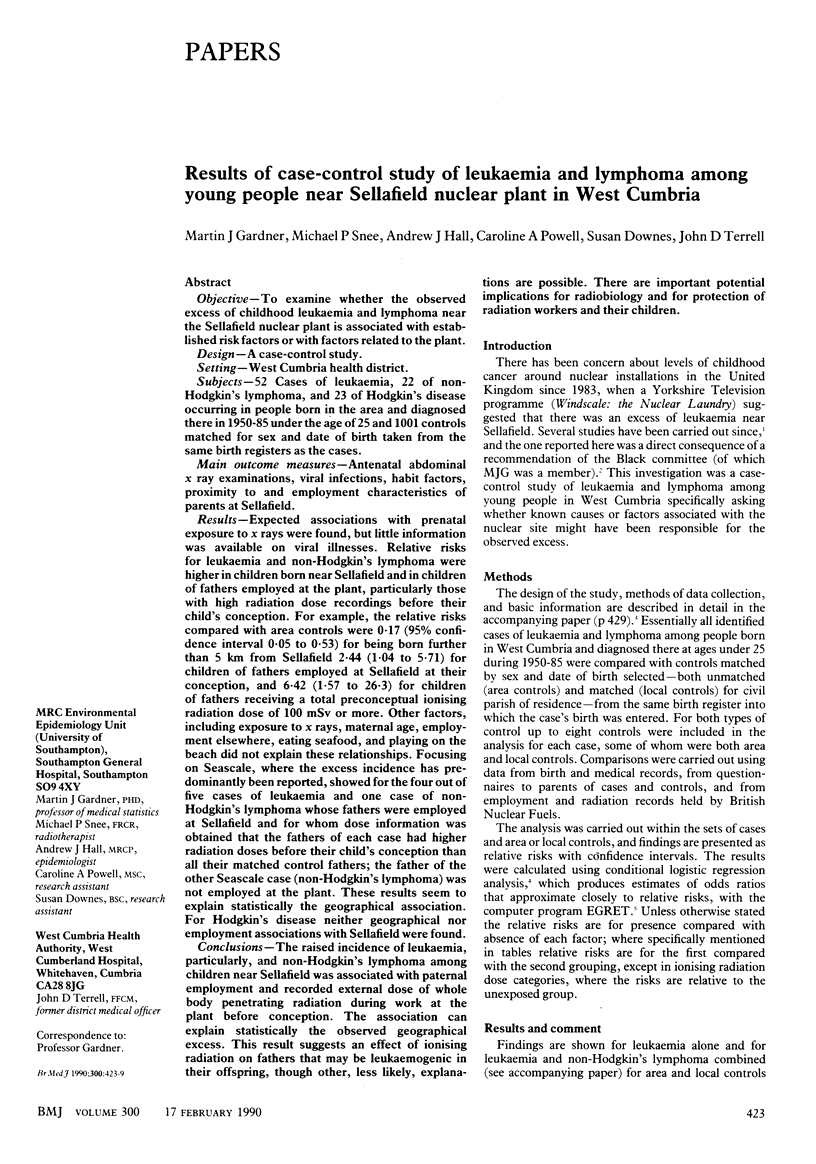
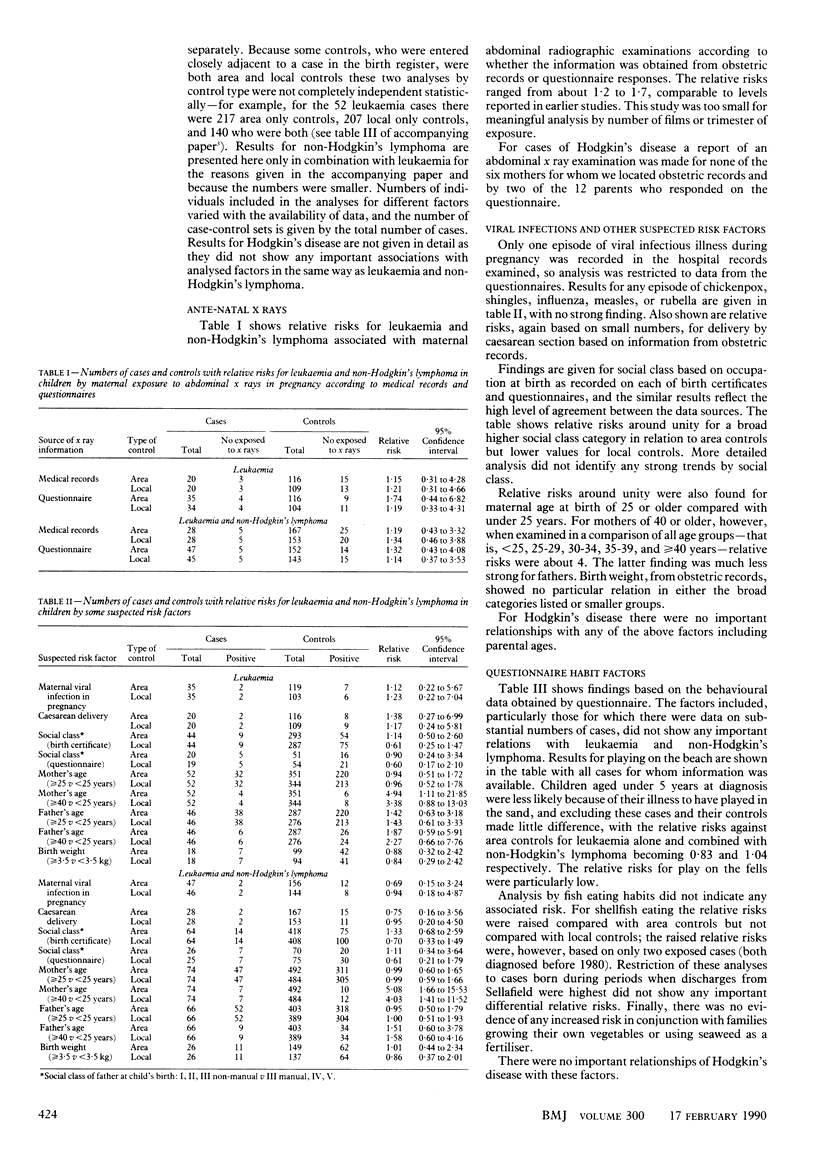
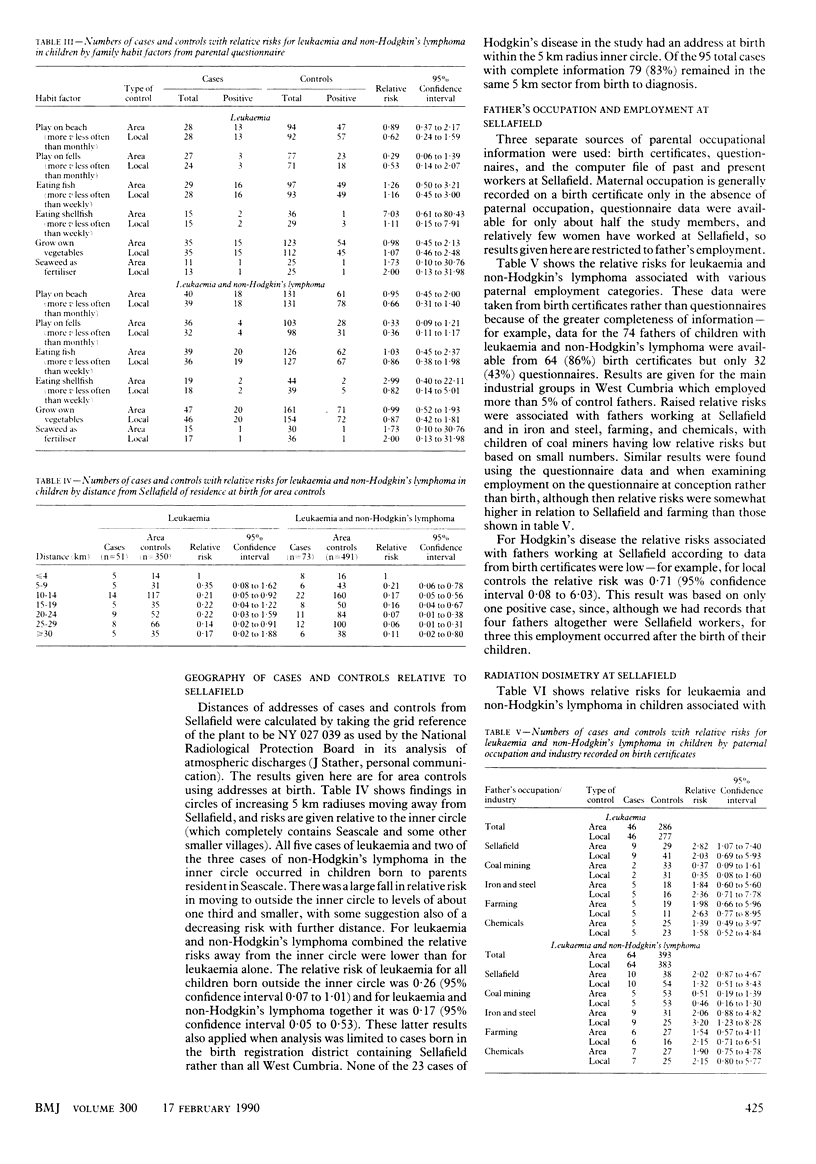
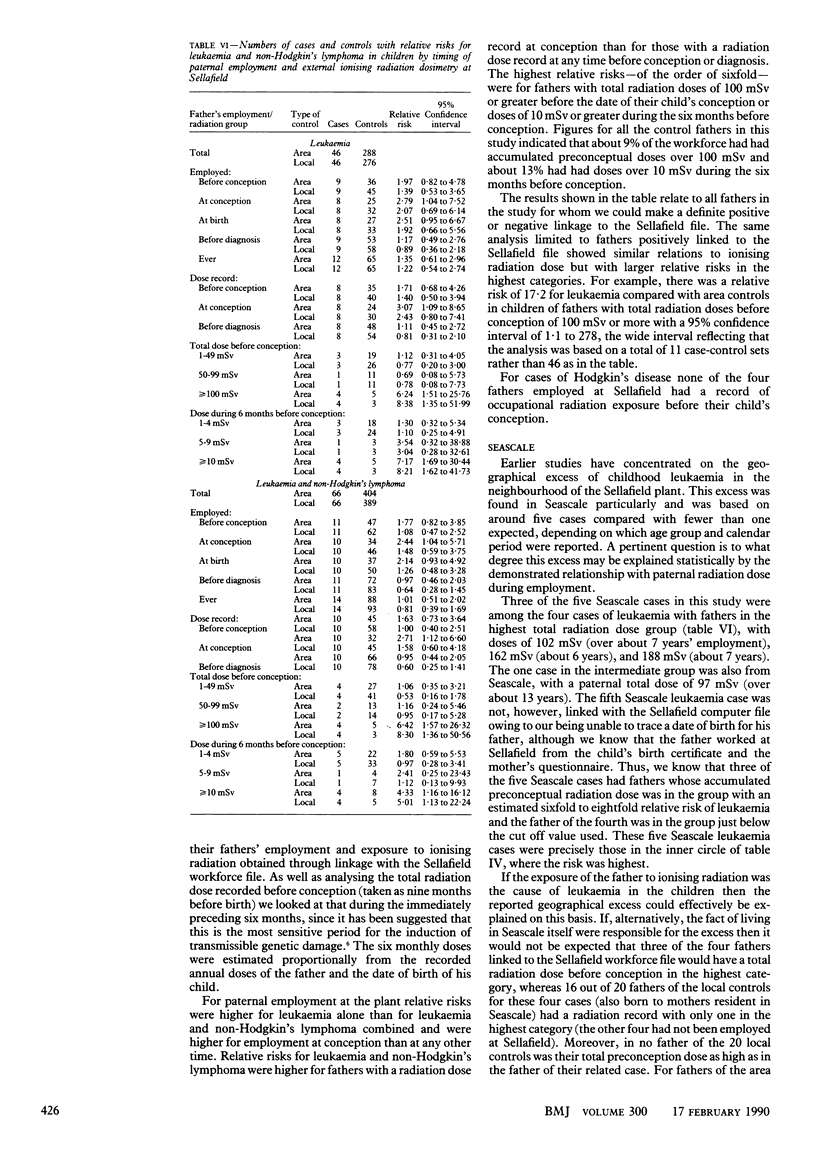
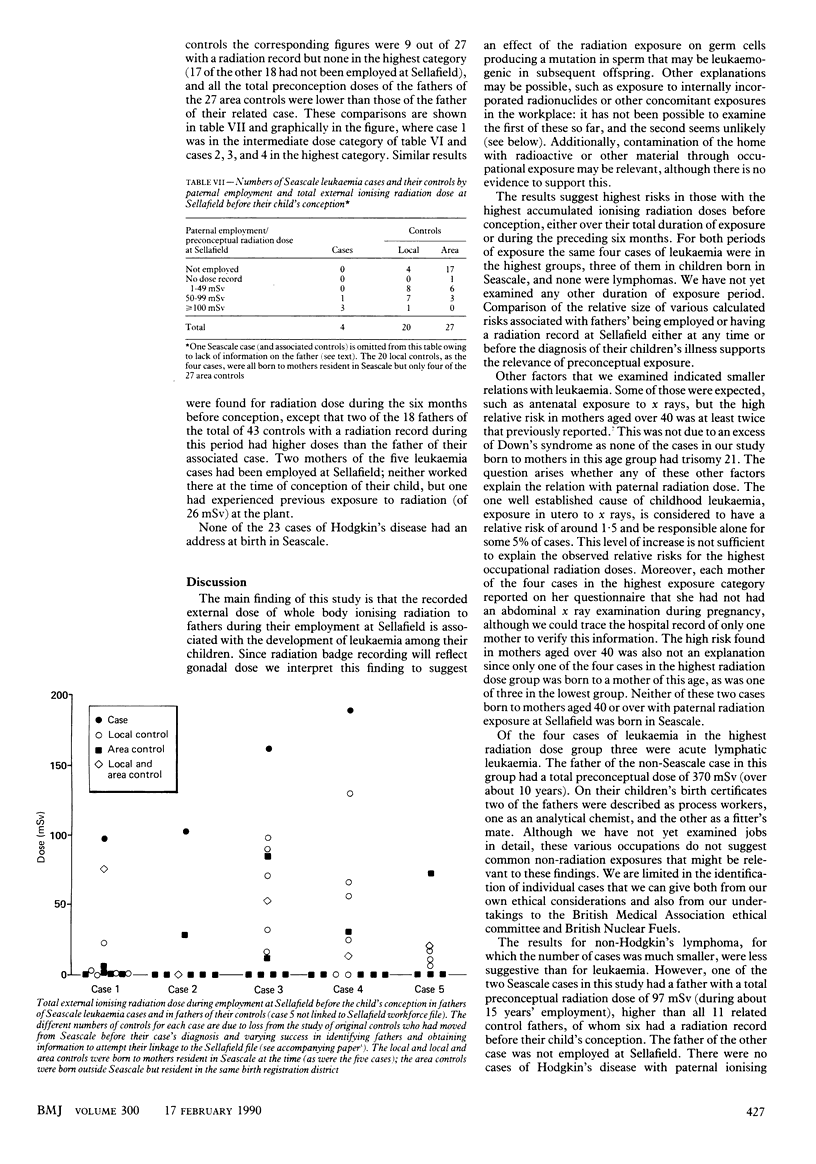
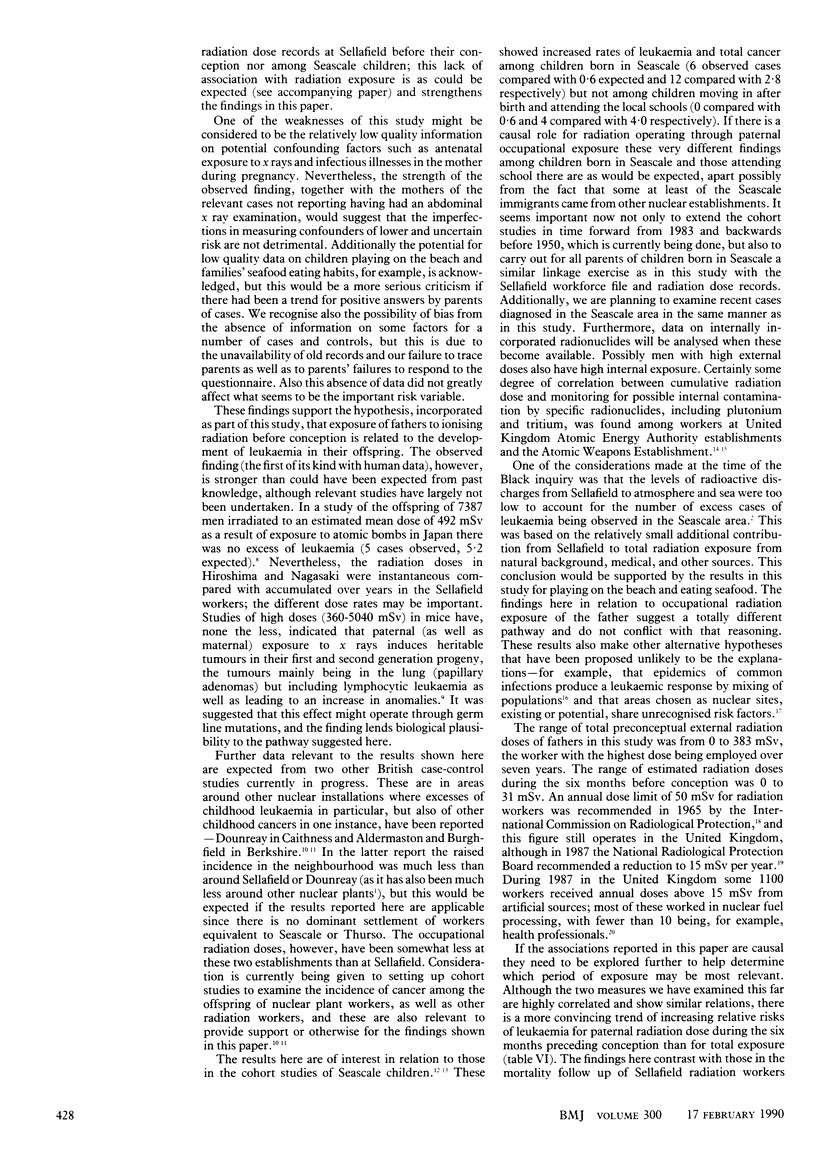
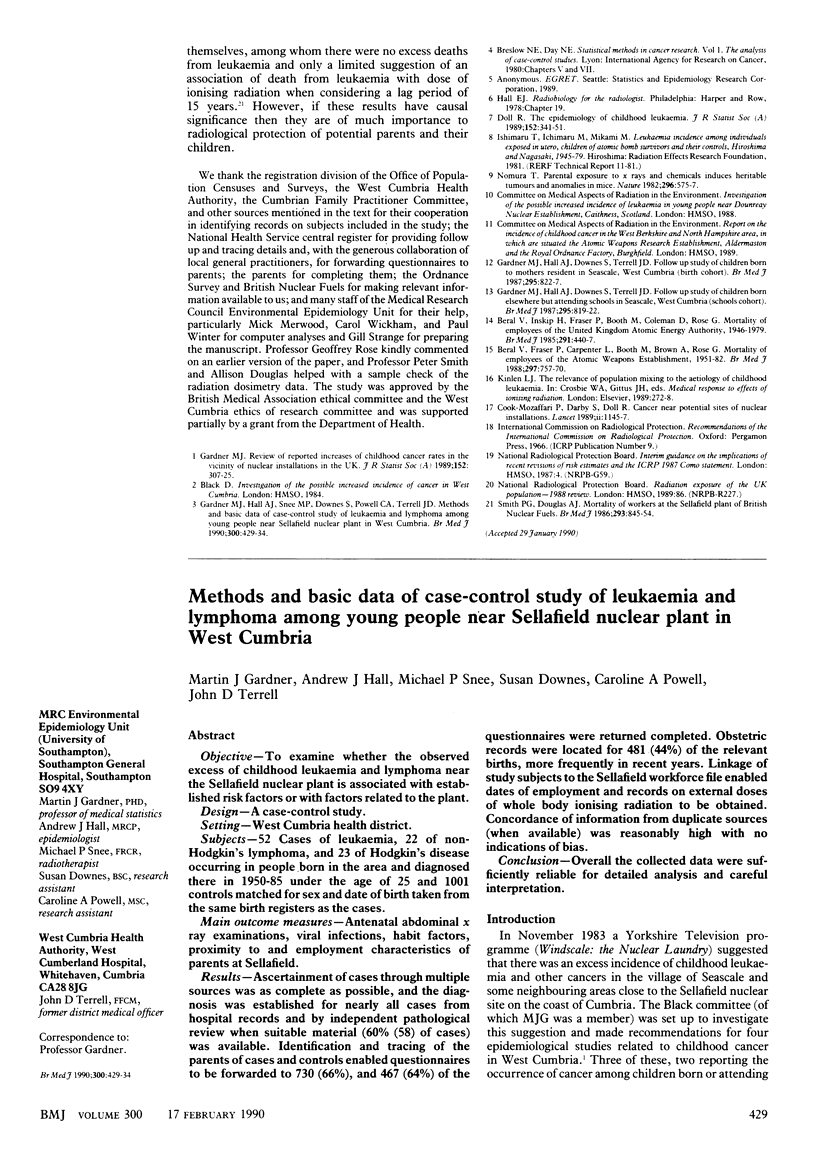
Selected References
These references are in PubMed. This may not be the complete list of references from this article.
- Beral V., Fraser P., Carpenter L., Booth M., Brown A., Rose G. Mortality of employees of the Atomic Weapons Establishment, 1951-82. BMJ. 1988 Sep 24;297(6651):757–770. doi: 10.1136/bmj.297.6651.757. [DOI] [PMC free article] [PubMed] [Google Scholar]
- Beral V., Inskip H., Fraser P., Booth M., Coleman D., Rose G. Mortality of employees of the United Kingdom Atomic Energy Authority, 1946-1979. Br Med J (Clin Res Ed) 1985 Aug 17;291(6493):440–447. doi: 10.1136/bmj.291.6493.440. [DOI] [PMC free article] [PubMed] [Google Scholar]
- Gardner M. J., Hall A. J., Downes S., Terrell J. D. Follow up study of children born elsewhere but attending schools in Seascale, West Cumbria (schools cohort). Br Med J (Clin Res Ed) 1987 Oct 3;295(6602):819–822. doi: 10.1136/bmj.295.6602.819. [DOI] [PMC free article] [PubMed] [Google Scholar]
- Gardner M. J., Hall A. J., Downes S., Terrell J. D. Follow up study of children born to mothers resident in Seascale, West Cumbria (birth cohort). Br Med J (Clin Res Ed) 1987 Oct 3;295(6602):822–827. doi: 10.1136/bmj.295.6602.822. [DOI] [PMC free article] [PubMed] [Google Scholar]
- Gardner M. J., Hall A. J., Snee M. P., Downes S., Powell C. A., Terrell J. D. Methods and basic data of case-control study of leukaemia and lymphoma among young people near Sellafield nuclear plant in West Cumbria. BMJ. 1990 Feb 17;300(6722):429–434. doi: 10.1136/bmj.300.6722.429. [DOI] [PMC free article] [PubMed] [Google Scholar]
- Nomura T. Parental exposure to x rays and chemicals induces heritable tumours and anomalies in mice. Nature. 1982 Apr 8;296(5857):575–577. doi: 10.1038/296575a0. [DOI] [PubMed] [Google Scholar]
- Pfisterer M., Burkart F., Jockers G., Meyer B., Regenass S., Burckhardt D., Schmitt H. E., Müller-Brand J., Skarvan K., Stulz P. Trial of low-dose aspirin plus dipyridamole versus anticoagulants for prevention of aortocoronary vein graft occlusion. Lancet. 1989 Jul 1;2(8653):1–7. doi: 10.1016/s0140-6736(89)90253-5. [DOI] [PubMed] [Google Scholar]
- Smith P. G., Douglas A. J. Mortality of workers at the Sellafield plant of British Nuclear Fuels. Br Med J (Clin Res Ed) 1986 Oct 4;293(6551):845–854. doi: 10.1136/bmj.293.6551.845. [DOI] [PMC free article] [PubMed] [Google Scholar]


